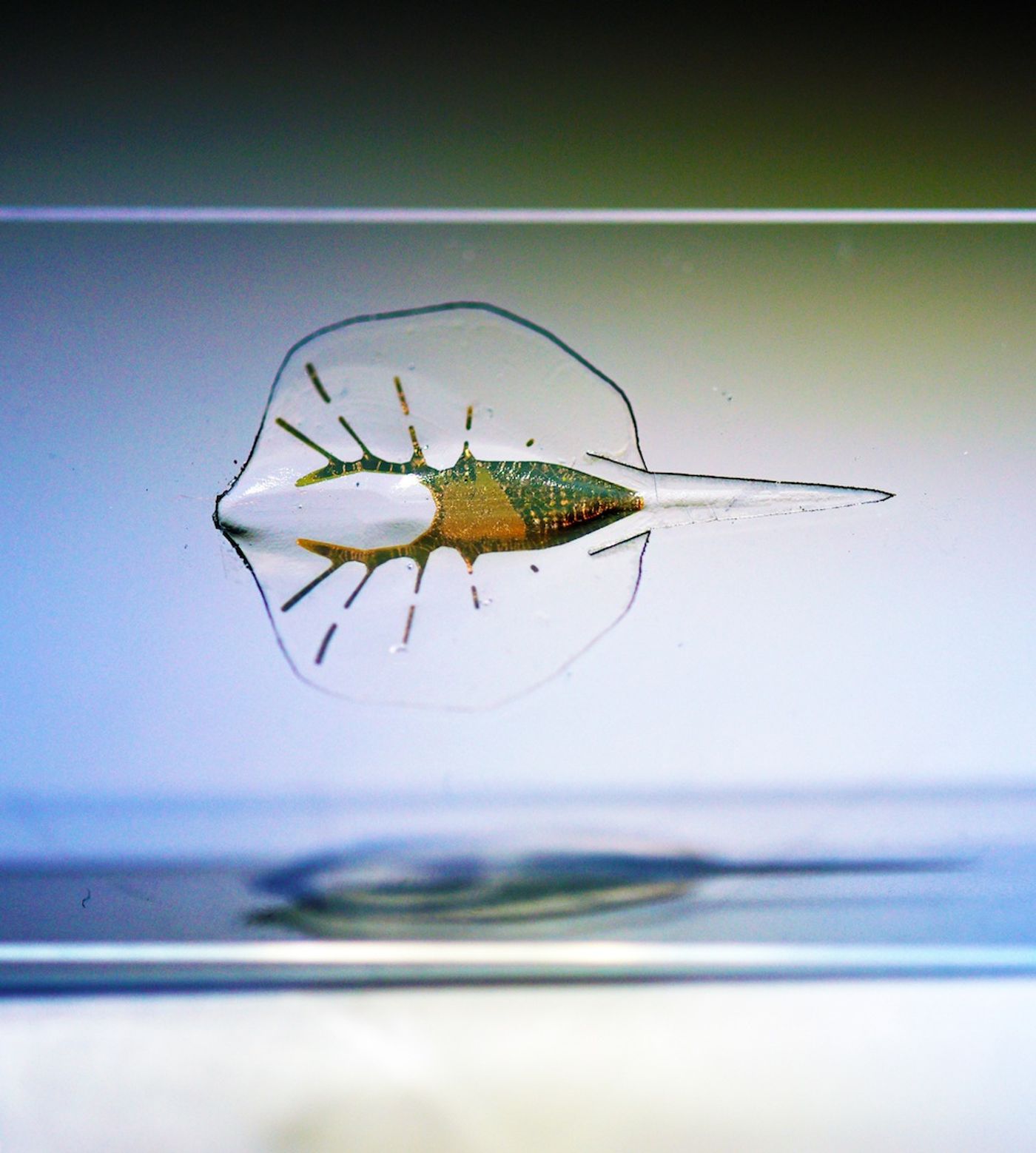Stingray Robot Swims With Help of Light and Rat Heart Cells
Robots are cool, and what’s even cooler than robots are cybernetic organisms. Although we’re not quite there with Terminator-like technology, scientists are reportedly working hard to get there.
United States-based researchers have collaborated on a project to create a soft-robotic representation of a stingray. The study was published in the journal Science last month.

The scientists used the body shape and many other factors of stingrays to create a gold skeleton backbone that was then covered with soft plastic and given soft rubber flaps that act as swimming fins.
What they did next was coat the rubber fins with rat heart muscle cells, and to their amazement, they were able to get the rat heart muscle cells to react to light beams, allowing the stingray robot to swim in relation to the light signals.
According to Live Science, the robot cannot make its own decisions because it doesn’t have a brain. The researchers need to control it with light signals in order for the stingray robot to swim.
Nevertheless, it’s believed that by integrating an array of various other kinds of bodily cells to work together with the rat heart muscle cells, scientists may be able to get the stingray robot to swim on its own and make its own maneuverability decisions.
"It's alive, but it's not an organism — it can't replicate, it can't reproduce," author Kit Parker of Harvard University told Live Science "We make them in batches of five or six, and they live about a week, maybe less."
The selection of rat heart muscle cells was reportedly in the cards because the way that a stingray beats its fins to swim resembles that of how a heart beats. As a result, the cell of choice has led to a successful beta stage in creating a stingray robot that can swim with light signals.
You can check it out in the video below:
Not only does this research help scientists better understand the future of Terminator-like cybernetic organisms, but it may also help with the development of future artificial hearts that require certain kinds of control, whether or not that may be light-based.
Learning how to control heart muscles could potentially save a person’s life when the person suffers from a heart dysfunction.
Source: Live Science








